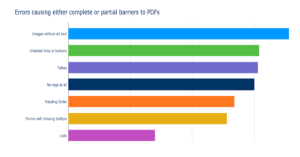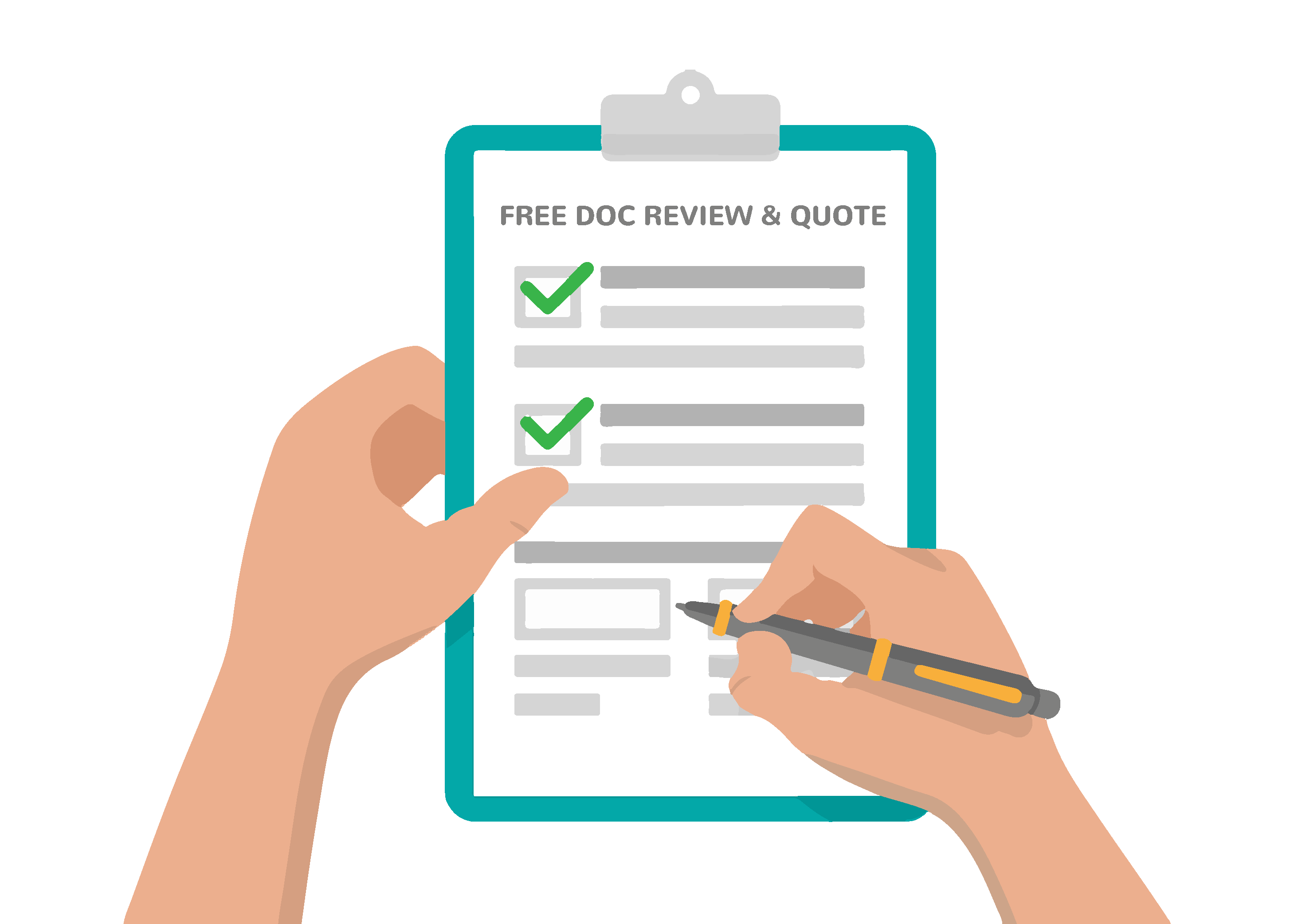PDFs are everywhere. If you are using assistive technology to read digital information because you are blind, have low vision, or have other reading disabilities, inaccessible PDFs can pose a challenge. During an average day, a person might interact with documents like bank and utility statements, healthcare information, owner’s manuals, educational materials, forms, and work documents of many kinds.
Many PDFs are not digitally coded to work with assistive technology such as screen readers or connected Braille displays. That means the information they convey is unavailable, or not fully available, for many users. One assistive technology user said,
“I miss out on information I would like to read, but cannot.”
Companies are Unaware of PDF Accessibility Issues
Many companies have begun addressing digital accessibility, but PDF accessibility doesn’t always get prioritized. It is possible companies aren’t aware of how many people in their audience aren’t able to access the PDFs they create or how assistive technology interacts with PDF files.
People who may be blind, have low vision, and use assistive technology to read PDFs don’t always complain. Despite the rising number of digital accessibility lawsuits across the country, filing a lawsuit isn’t the most common response to inaccessible PDFs. Often they just move on to the next company in hopes of a better experience.
A Survey of Assistive Technology Users
RemDoc wanted answers directly from people affected by inaccessible PDFs about the barriers they face and how those barriers are affecting them every day. With the help of the National Federation of the Blind, across the United States. We conducted the survey online, so all participants are computer literate.
The survey questions were designed to understand how inaccessible PDFs affect real people going about the business of their daily lives at home, work, and school. Every responder said that they are an assistive technology user. RemDoc shared the survey on mailing lists for the NFB, among blindness groups and disability organizations around the country, and on social media.
PDF Inaccessibility is More Common Than You Think
If you haven’t tagged your PDF documents for accessibility, a process known as PDF remediation, your documents probably aren’t accessible to assistive technology users. Your customers and website visitors are accessing your PDFs, but probably aren’t able to get the information they need, and it’s impacting their lives and YOUR business.
- Survey respondents said they encounter PDFs between 5 and 20 times every day, and between 15 and 100 times every week.
- Survey participants said that 67% of PDFs they encountered were either partially or entirely unreadable.
Customers are not the only ones impacted by your inaccessible PDFs. Your employees may also use assistive technology. Students in educational institutions may also be affected by inaccessible documents.
- 72% of respondents said inaccessible PDFs impact their ability to do their job or complete coursework.
- 60% of the respondents said that inaccessible PDFs affect their ability to go about their daily lives.
- 14% of the respondents said that inaccessible PDFs prevented them from completing work or life tasks more than 20 times a month.
Said one survey participant,
“[Trying to read inaccessible PDFs] slows me down at work and sometimes I avoid reading docs because it’s frustrating fighting with JAWS and Adobe.”
Types of Inaccessible PDFs Encountered
The survey participants encountered a wide variety of PDFs. These are the most commonly reported types of PDF documents:


Other PDFs encountered included job applications, recipes, magazines and books, agendas, government documents, schedules, forms, movie and tv scripts; state and municipal government information, COVID-related information, music notation/lyrics, restaurant menus, Adobe signature forms, invoices, company catalogs, church newsletters; receipts; medical exam reports, knitting and crochet patterns, fliers and advertisements.
Errors Encountered in Inaccessible PDFs
Survey participants encountered a number of types of errors trying to read PDFs. These errors created either full or partial barriers to the information each person was trying to read.
“PDFs are frequently scanned images or pictures of text, which are not accessible with a screen reader.”
The most commonly reported errors are images without alt text.


“Words not separated by spaces, words with letters left out, and no headings”
“No text at all that can be read because of security or because the text is just a picture. Very bad OCR with garbled words, strange characters in place of letters, words run together, graphs and chart labels interrupt sentences, nonexistent word wrap so that carriage returns interrupt words. I sometimes read scientific papers because I’m interested in astronomy, and sometimes I come across old newspaper articles from my town’s paper from decades ago, and I find these text issues mostly in such papers, articles, and sometimes in ebooks.”
“PDFs are frequently scanned images or pictures of text, which are not accessible with a screen reader. In order for the screen reader to be able to read the text, it must be typed.”
PDF Accessibility is Vital
Many people don’t think about the number of PDFs they interact with on a daily or weekly basis. For those who use assistive technology, encountering a PDF can be the equivalent of a dead end. With 67% of PDFs being either partially or completely unreadable, this represents a significant loss of access to vital sources of information.
This survey highlights the importance of making sure all PDFs are accessible so that everyone has equal access. One assistive technology user said,
“Many PDF documents are forms I cannot fill out like my sighted peers can… They are missing the ability for me to do so with a screen reader. This extends to divorce documents in Iowa. Yes, I had to let my divorce default to my husband due to accessibility of PDF files.”






